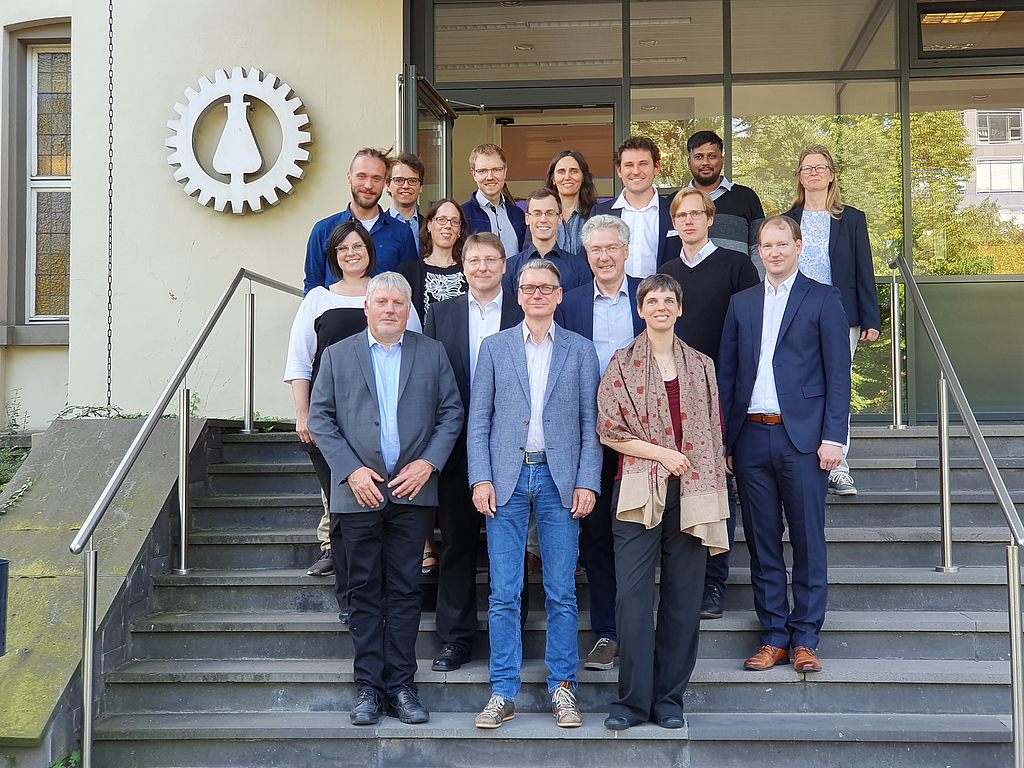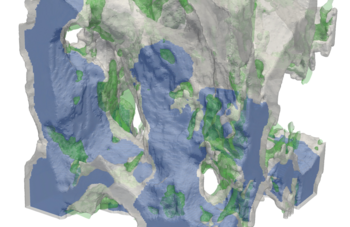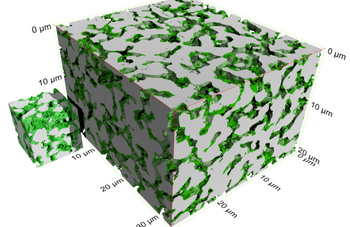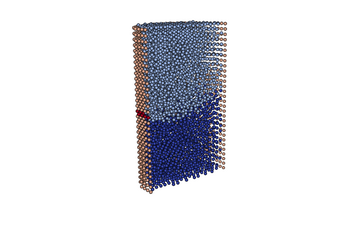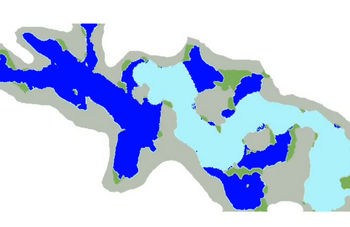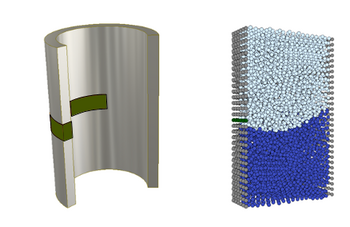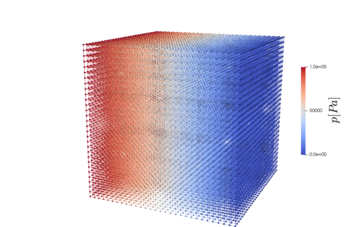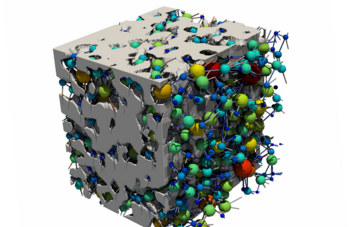Subproject 5
Modelling of electrolyte distribution in representative volumes
The sub-project TP5 pursues the goal of modelling representative volumes of the porous Gas Diffusion Electrode (GDE), which are responsible for ensuring intimate contact between the silver catalyst, the gaseous reactants and the liquid electrolyte. Because the wetting on the pore scale influences the overall electrode performance the knowledge of this distribution and its dependence on the heterogeneous wetting properties, the geometrical configuration and the boundary conditions is crucial for further process improvement.
As a numerical method we use the Smoothed Particle Hydrodynamics (SPH) method that we implement in our institutions own code SiPER. In the first project phase, we showed the capability of the physically consistent modelling of heterogeneous wetting on different substrates such as the non-wetting Polytetrafluoroethylene (PTFE) and the wetting silver catalyst. Recently, we showed the capability of the SPH-method to model these structures based on FIB-SEM images of the electrode structure.
In the second period, we move to larger structures, what is necessary to understand the heterogeneous wetting and the effect of electrowetting on representative structures. From preliminary measurements, it is known that an electric potential leads to a better wetting of the silver phase by the electrolyte. This behaviour, known as "electrowetting", will be considered in the simulation of the electrolyte distribution. To model larger structures, the development of new boundary conditions and more advanced time integration schemes like implicit solvers are necessary. This is a novelty in the SPH-method. To model larger structures on parallel machines an efficient and robust parallelization scheme will be implemented as part of an overall GDE-modelling workflow. With hybrid-coupling schemes combining the accuracy of Direct Numerical Simulation with the efficiency of more simplified-physics models like pore-networks to capture the electrolyte distribution and the diffusion paths of the reactants towards the three-phase boundary where the oxygen or carbon dioxide reduction reaction is taking place. Part of this work is the validation of the simulation results against integral capillary-pressure Saturation measurements.
The aim of this work is to obtain reliable information on the structure dependence of wetting in technical gas diffusion electrodes. This knowledge can further help to improve the preparation process, and thus ultimately the process performance, for such electrodes.
Video: https://youtu.be/uHEpqKVZnD0
University of Stuttgart
Institute of Chemical Process Engineering
Böblinger Straße 78
70199 Stuttgart
Fax: + 49 711 685-85242
https://www.icvt.uni-stuttgart.de/en/
Contact
Prof. Dr. Ulrich Nieken
Phone: +49 711 685-85230
E-Mail: ulrich.nieken@icvt.uni-stuttgart.de
Thorben Mager, M.Sc.
Phone: +49 711 685-85226
E-Mail: thorben.mager@icvt.uni-stuttgart.de
